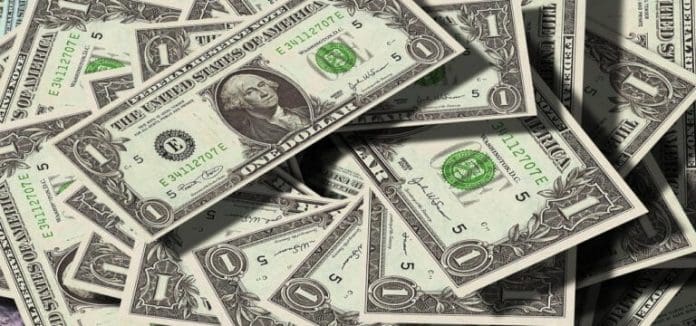The progress made on the misleadingly labeled Inflation Reduction Act is a tacit signal that the Biden administration has moved ahead of further stimulus checks or other direct payments that were a regular feature during the months of the pandemic and immediately after. It is now the state governments across the US that are pitching in with various forms of stimulus support to help residents tide over the record inflation.
The inflation that followed the pandemic starting from the third quarter of 2021 has seen prices rise to record levels. The price of gasoline has almost doubled from pre-2020 figures while there has been a considerable increase in prices of other essential items, utility bills, and home rent.
The Federal administration has consistently reiterated that tackling the surging inflation rate was a top priority, but economists have blamed the rising prices on the third stimulus check and other largesse doled out under the American Rescue Plan Act.
The President declared that his top priority remains to get prices under control. But inflation has soared with each passing month and ended at 9.1% in June 2022, the highest since November 1981. The endorsement of the Inflation Reduction Act is projected to increase revenue by $739B even as it attempts to lower pharmaceutical rates. There is also the matter of investing in a wide range of clean energy programs to meet international commitments and also save on the domestic front.
The bill was announced after a lot of drama as Virginia Senator Joe Manchin continued to use what was virtually a veto power given that Biden would need every one of the 50 Democratic Senators on his side if he is to pass the bill in any form. He ultimately had to water down his initial spending plans to accommodate Joe Manchin.
Manchin said that the Act would address the problems that Americans faced today, including the high cost of health care, environmental and energy security, and record inflation rates. But he was not forthcoming about how the Act would help bring down inflation.
Conservative Economists And Policymakers Say The Third Stimulus Check Is Mostly To Blame For Inflation
It remains a bitter reality that inflation has led to the average American worker losing around $3,400 in annual wages in real terms under Biden despite a marginal increase in wages. Economists have consistently and overwhelmingly pegged the high inflation on the past steps taken by President Biden immediately after coming to power.
Prices at present are rising now in a month as they did in a whole year in the past decade. And conservative economists and policymakers say that it is down to a massive amount of government spending. They say that when Biden came to power, the year-over-year inflation was a mere 1.4%. In comparison, it was 1.3% in June alone and if annualized, it would amount to a staggering 15%.
And it is only the American Rescue Plan Act that is the difference between the two periods. It led to direct spending in the economy and handed out excessive money, money that wasn’t needed at that stage as the pandemic situation was returning to normal and the economy had picked up by then.
The excess amount, coming soon after the second stimulus check, led to direct spending in the economy. The result of this generosity was an increase in the amount of money in the economy without a corresponding increase in the number of goods and services, which was yet to pick up at that stage.
The successive payments under the Biden administration, starting from the $1,400 stimulus check, followed by the extended unemployment benefits for workers and the enhanced Child Tax Credit of between $3,000 to $3,600 per child gave each family as much as $10,000 in months. Even families that had not been economically affected during the pandemic period gained as there was little monitoring of income trends during the pandemic period.
A study by the San Francisco Federal Bank has shown that while inflation has affected the other leading economies, including the UK and the European Union, there is a marked difference in the rate. This difference of 3% is being blamed on the third stimulus check by the Republicans.
State Stimulus Checks Increased Worry Of Economists
Around 18 states have stepped in to support residents with more direct stimulus checks even as the federal administration makes a quiet exit. Flush with funds after a brief economic boom in the last two quarters of 2021, the states have decided to give some back directly to residents. They argue that it is their money and deserve to have it when they need it the most during this record inflation period.
California and Florida, ruled by opposing parties, are the latest among states to step in with stimulus checks for their residents. While Democrat-ruled California is giving stimulus checks to around 60% of its residents, Florida has restricted its generosity to around 60,000 families with children, sending out a $450 stimulus check.
The California inflation relief check is more complex and has three levels starting from a generous payment to families earning below $150,000 as joint filers. Such a family could receive as much as $1,050 if they have at least a dependent in the family.
Families with earnings as high as $250,000 could also receive up to $600 if they have a dependent in the family. Most states will start sending out stimulus checks in the last quarter of 2022.
Maine and New Mexico are among the first states to send out stimulus checks and have started their payment in June. Maine is sending out stimulus checks to around 200,000 families and individuals every week. Residents will get either $850 as an individual or double that for joint filers. Individuals with earnings below $100,000 will receive the payment.
New Mexico is sending out payments spread over three months starting June 2022. The relief is being issued in the form of two tax rebates spread over the period. The first has been sent in June. The second round of payments, up to $500 each, is in the process of being sent out. The final payments are expected in August. Already 800,000 rebates have been issued, sending out $290M.






